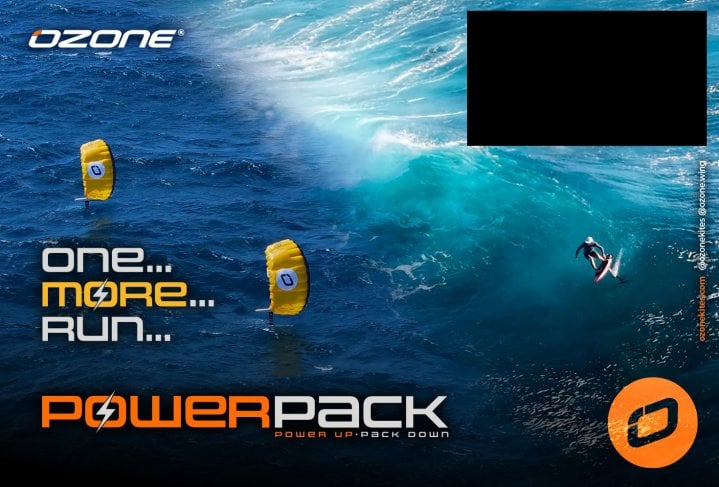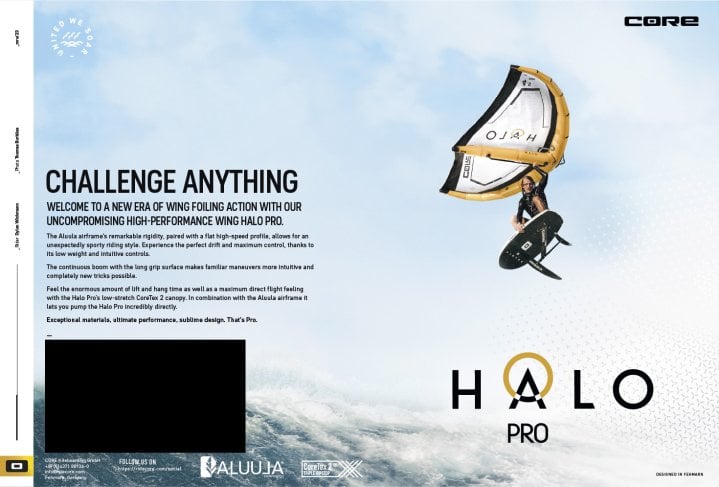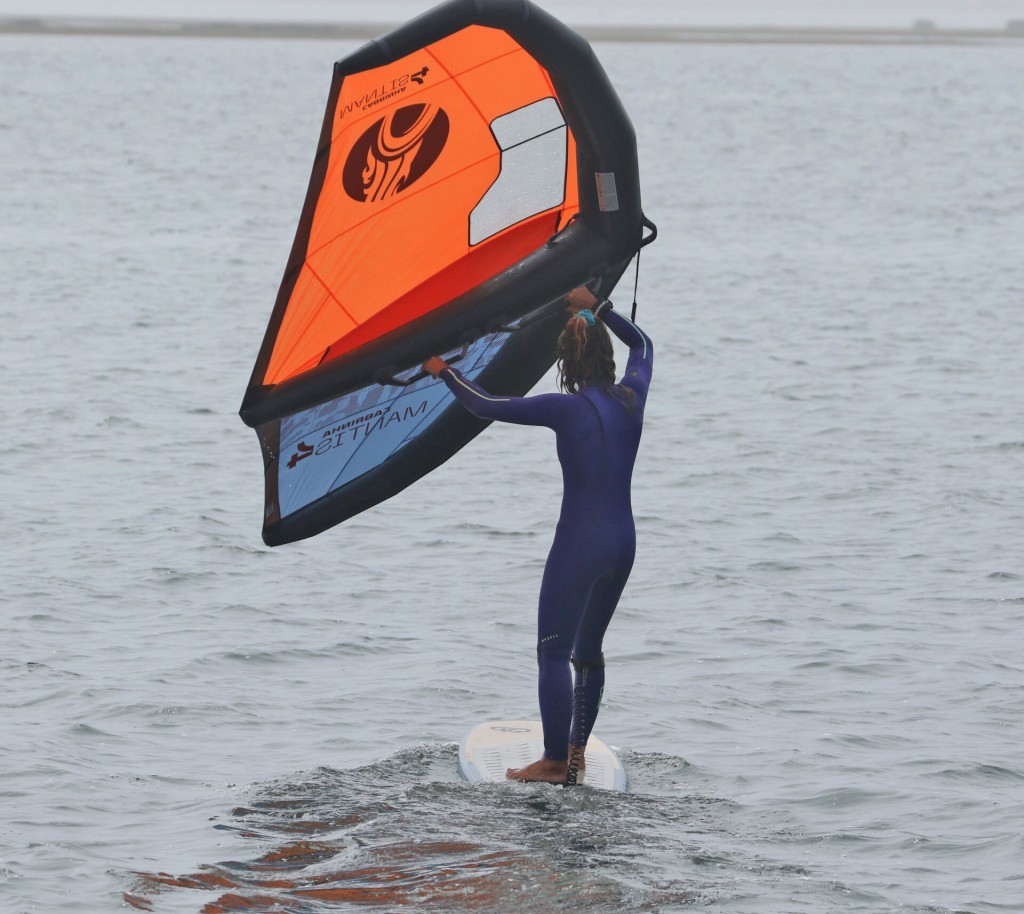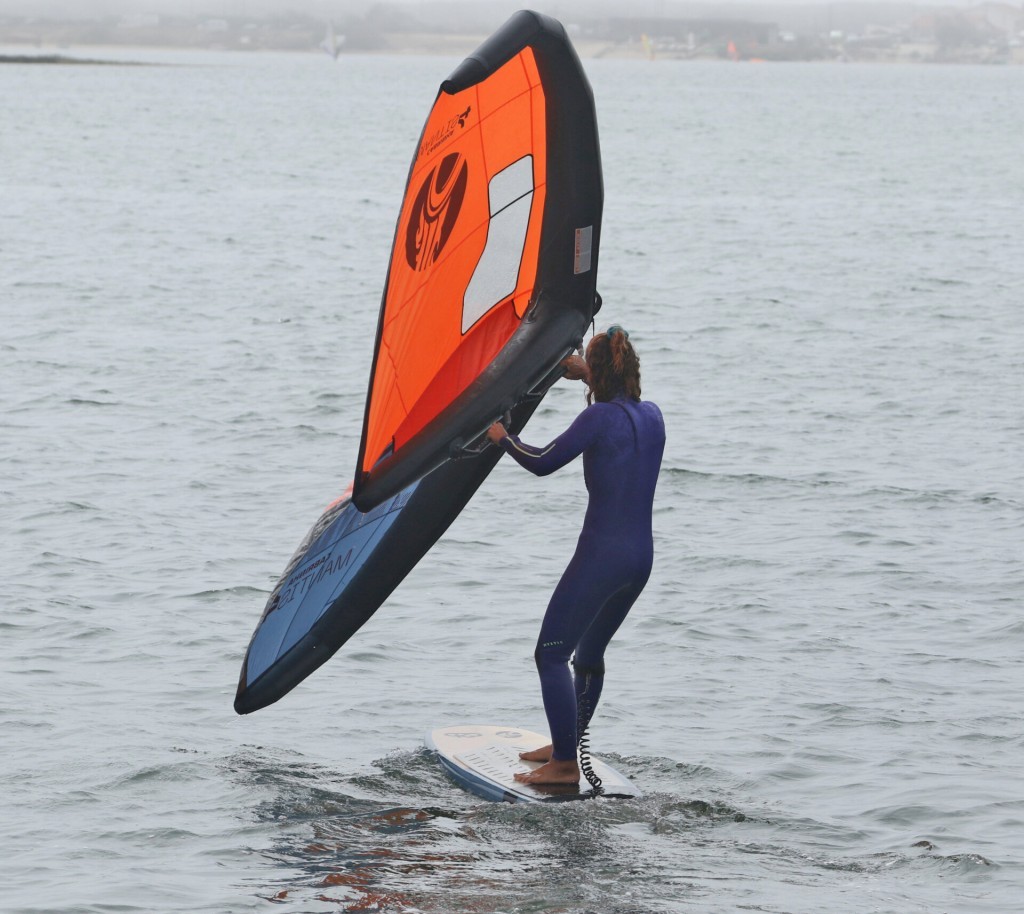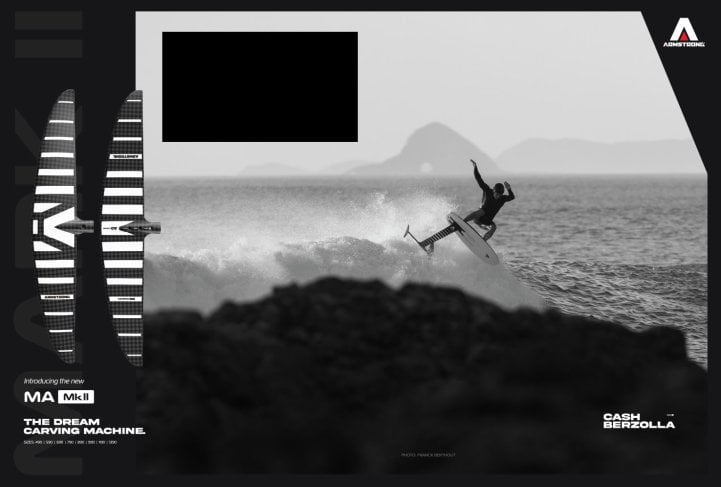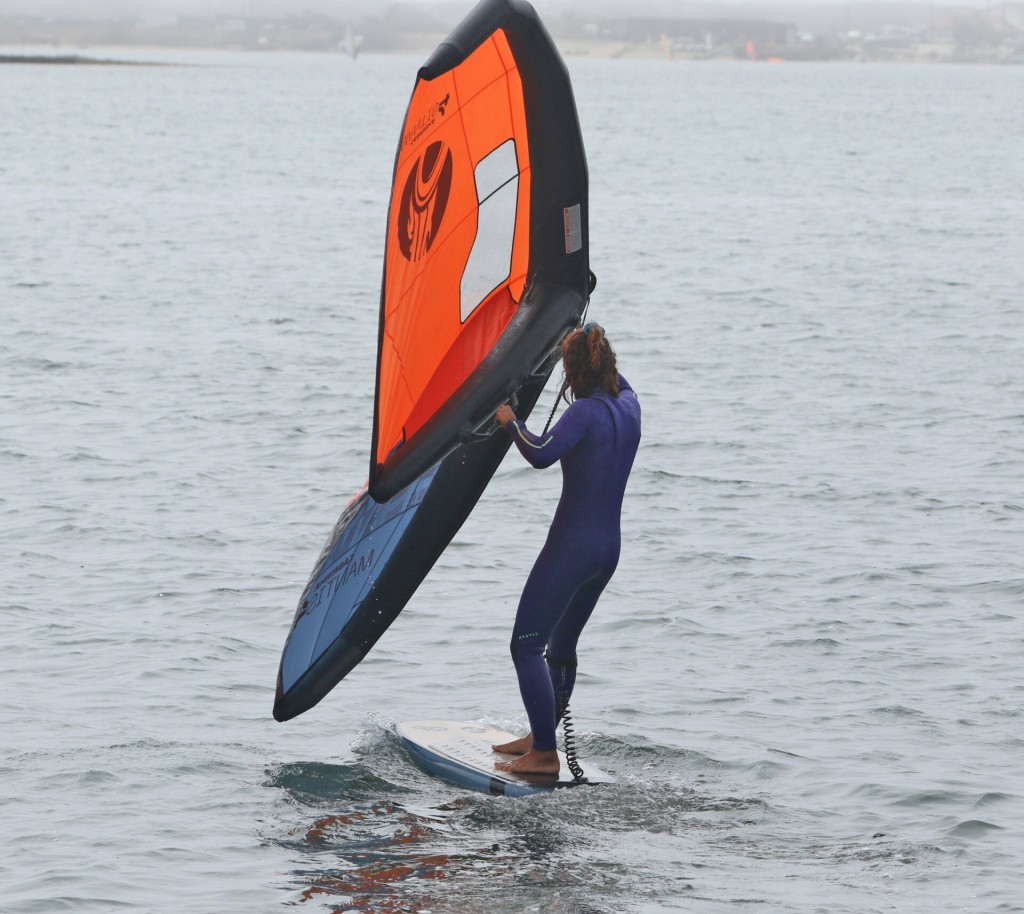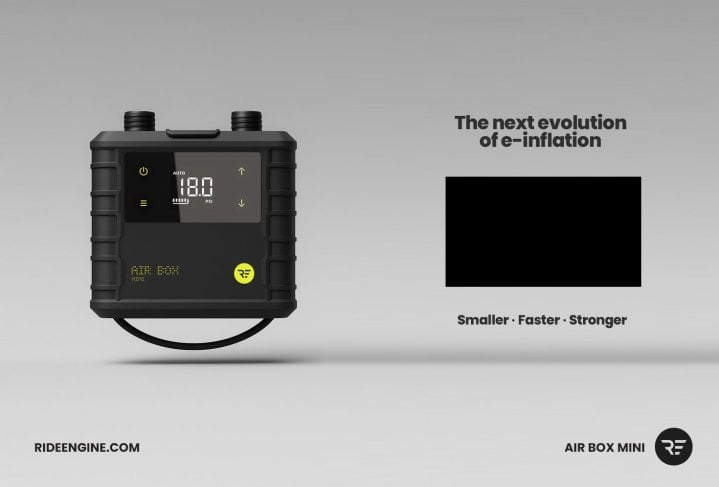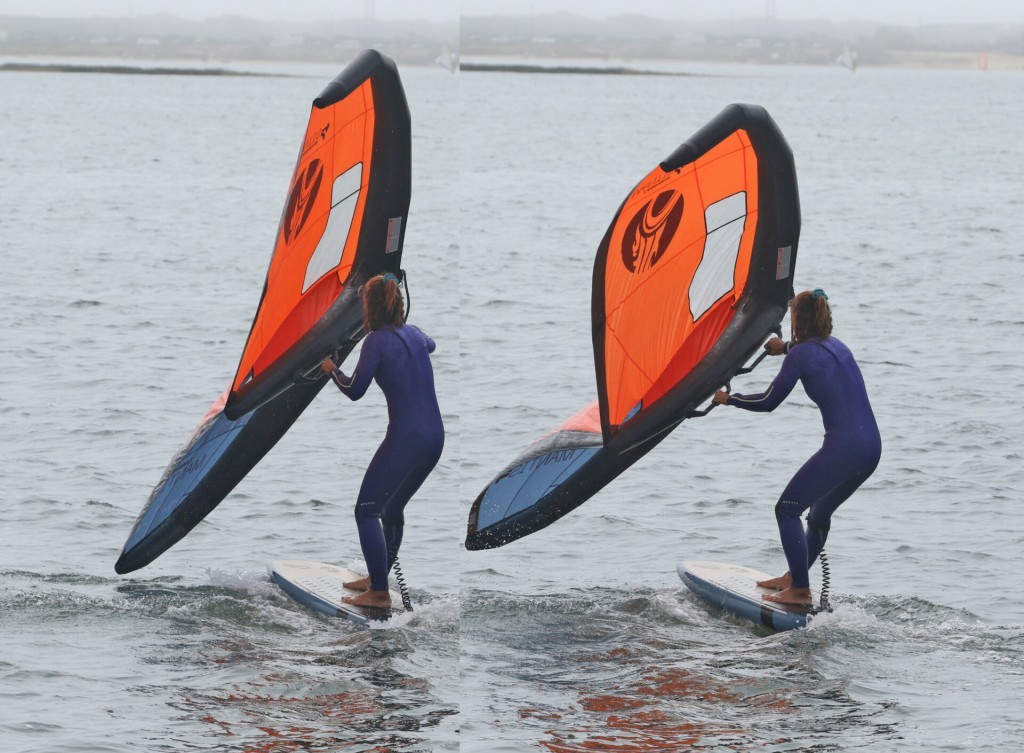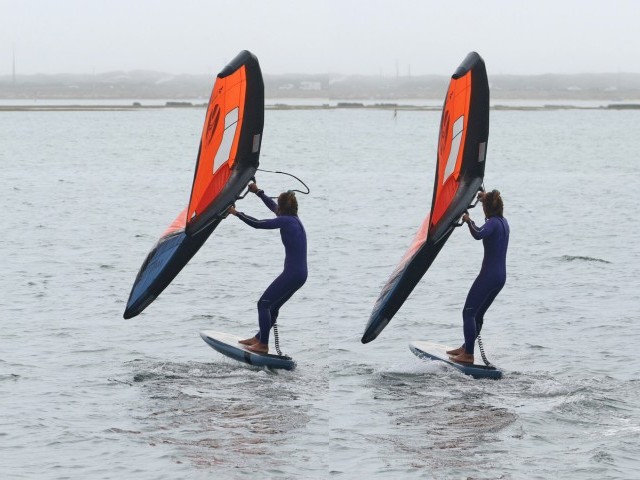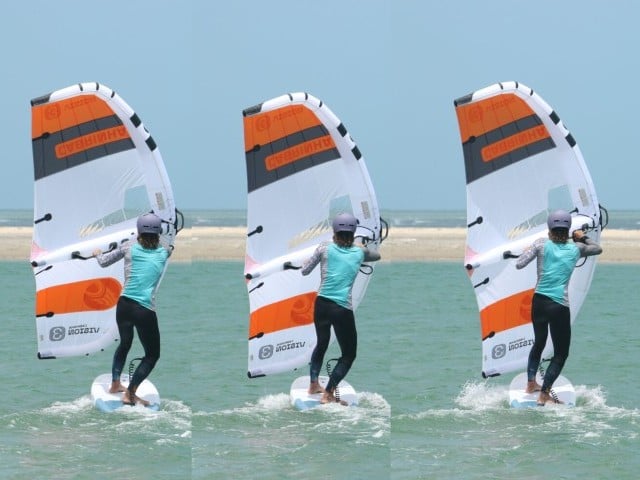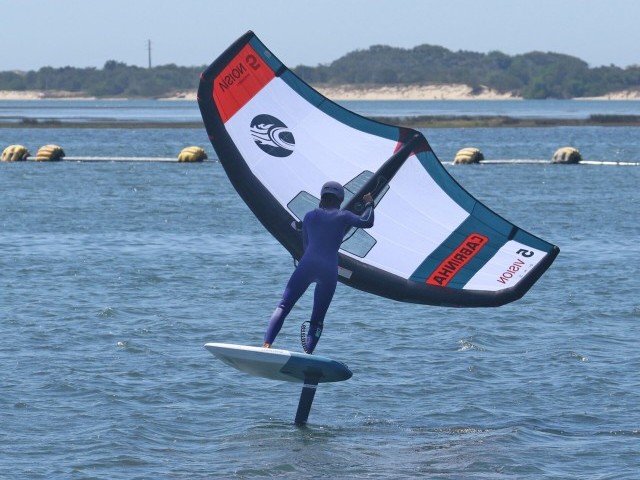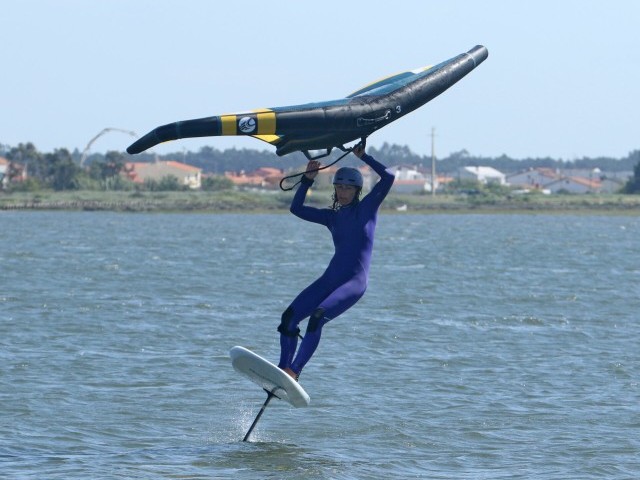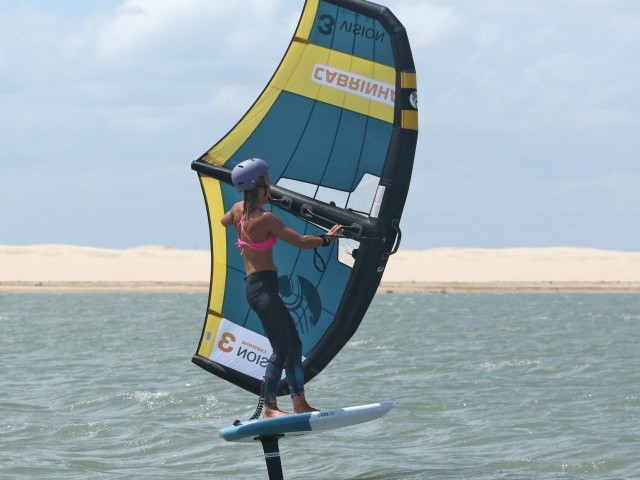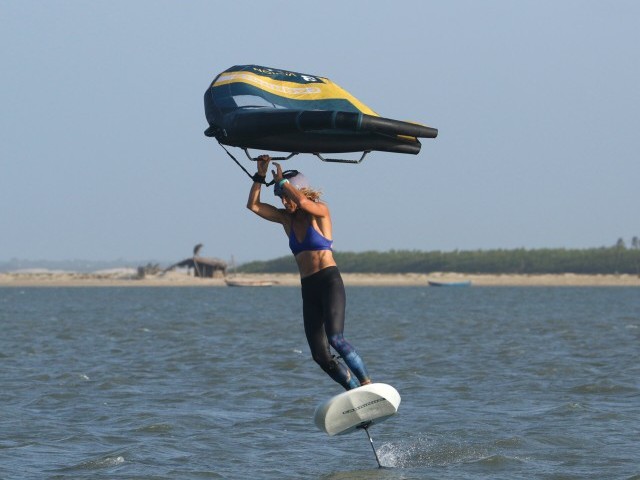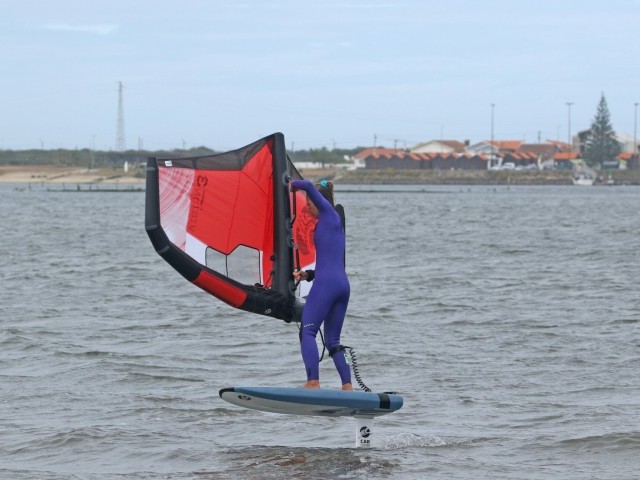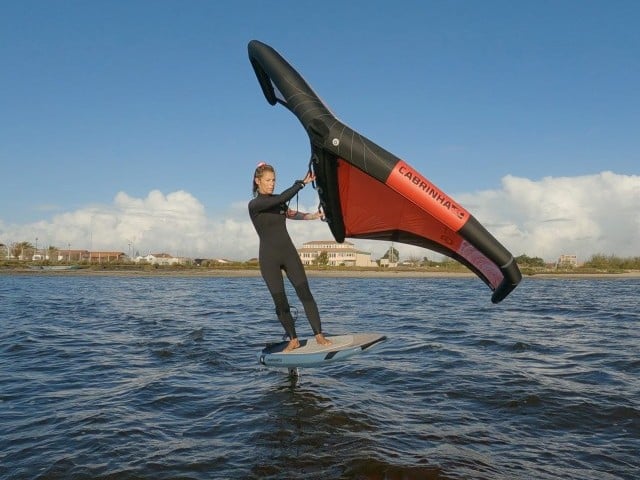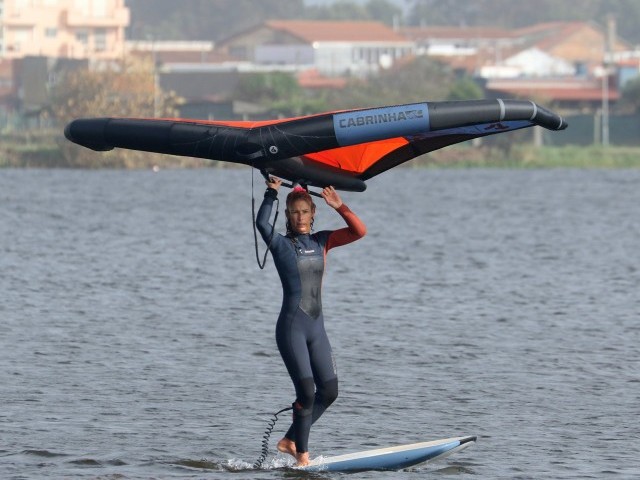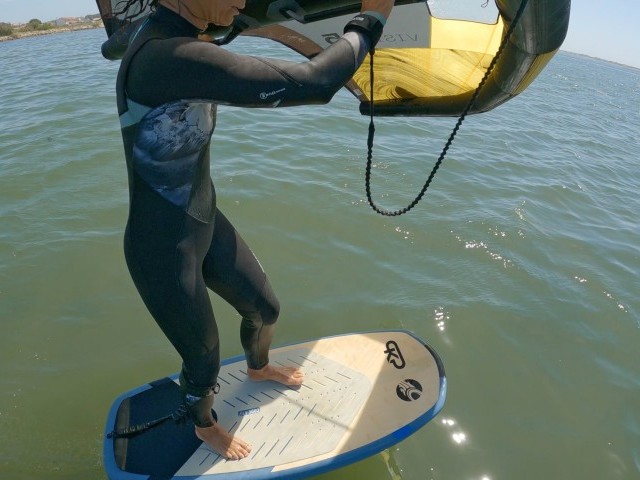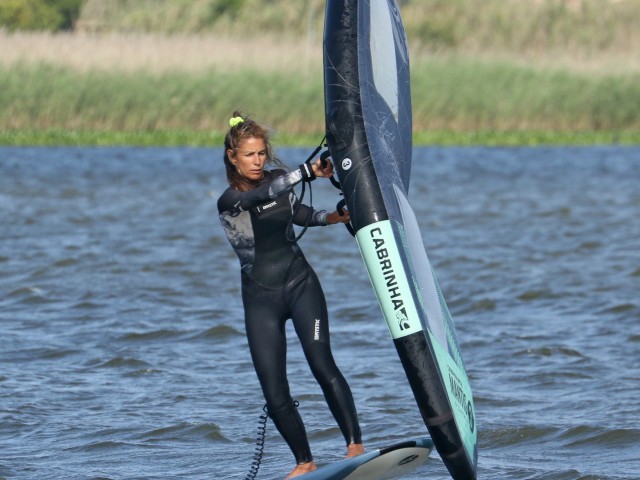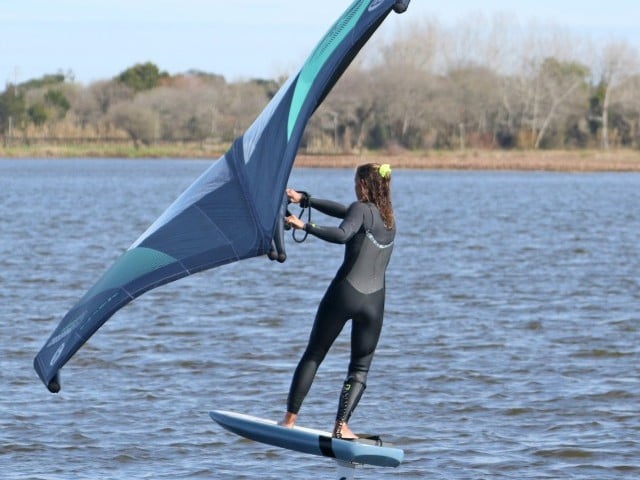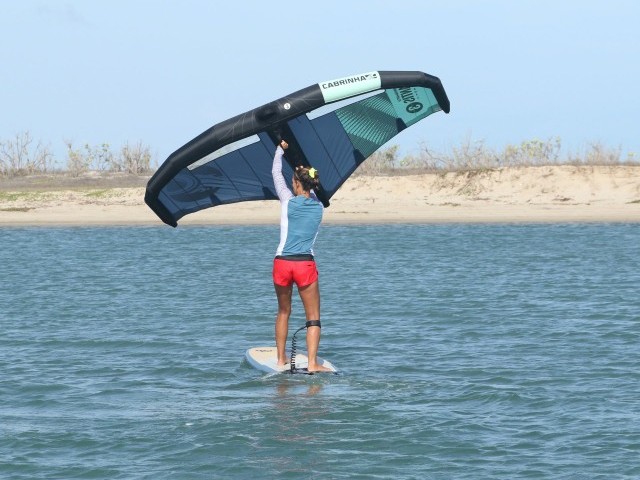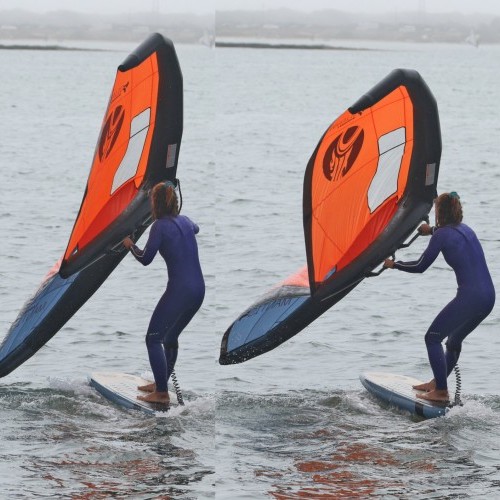
Pumping
Technique / Wing Foil
We’re going to delve into the world of pumping as a means to get up on the foil for this issue. If you’re happily flying around, you will perhaps notice that you need considerably less power in your wing once you’re up than you do to get up. Effectively, this can mean that you’re on a bigger wing than required! You may have also noticed that many wingers with more water hours than you have developed their pumping skills so that they can get up sooner or with smaller wings.
Leaving aside the rabbit hole that is equipment and focusing purely on technique, pumping, and here we’re primarily focusing on the wing, is a way of increasing your board speed and, therefore, lift so that you can get up on the foil earlier or quicker. This may be so you can wing in less wind or use a smaller wing in the same conditions. If you wing somewhere where the gusts can be short, you need to get up quickly and maximise the pull before they vanish. Pumping is also a great way to keep yourself up after a gybe or tack when the wind isn’t helping or when you unintentionally touch down.
The great news is that if you’re a dab hand at bearing away to get up on the foil, you’re already halfway there. The aim of pumping is no different from bearing away in a gust, accelerating. Keep the board down until you have enough speed and lift to climb. We’re going to concentrate on what you need to do with your wing, how you’re going to do it and also a little bit of why so that it hopefully all makes sense.
Before we get into the details of what you’ll do with the wing, let us take a moment to ponder a few ideas that will impact your quest for speed and lift.
- You still need to pull. Regardless of the physics-defying brilliance you may have seen online, we mere mortals still need something to fill our wings. If there’s no wind in it, you have nothing to use.
- Efficiency rules. Whether it be board trim for minimum drag and ultimate glide, the ideal point of sail for greatest acceleration, stiff core and front leg for maximum power transfer, or the perfect alignment of board, body, and wing, everything works in unison. The sum of all parts here adds up to extra forward momentum. Concentrating on each individual cog will reward you more than sheer brute force and determination (although they can help, too)!
This is also why we’re concentrating on pumping the wing and not challenging your coordination by adding the board and foil. That said, once you get the hang of and hone your wing action, you will find that it automatically affects your board and foil, which isn’t a million miles away from pumping. This bonus and unintentional action will have a similar effect of increasing lift.
OK, without further ado, let’s examine the crucial parts of pumping. In all the photos and sequences, the wind blows right to left, so follow any sequences that way, right to left.
Pic A. Woffing Upwind.
This should be familiar ground. Anytime you’re not flying on your foil, you should pinch upwind while waiting for a gust. Your front foot has a pretty standard position, whereas your rear foot is more mobile. This may mean that you’ve moved your rear foot forward to trim the board (more essential on smaller boards), and you might be weighting your heels to dig a bit of rail in the water for some added resistance. If there’s enough breeze, you’ll be flying the wing high and looking upwind for a gust. Once you see a gust coming, make sure you flatten the board. You can move your rear foot across the centreline and angle it slightly forward to get into an open offset stance. If you previously moved it forward, you may want to step your rear foot back slightly. Now you’re ready for the gust, waiting to feel if it materialises in your wing.
Pic B. Bear Away.
This initial bearing away is also your means of testing the gust. You aim to bear away towards a broad reach, the fastest point of sail. To bear away sheet in with your rear hand whilst relaxing your front arm and allowing the gust to pull your front hand away from you and towards the nose of the board so that your wing points forward. If it doesn’t pull, there’s not enough, so head back up and try again. If, however, it pulls your hand, brace your core and drive down through your front leg, pushing your front foot and the nose of the board away from the wind so that you bear away. As you do this, you must also trim the board from nose to tail and rail to get maximum glide.
Open Offset Stance As you bear away and keep the board trimmed, you need to set your stance. The idea is to get everything lined up to maximise efficiency from your actions. If you look at Karine, you can see that her feet are offset, and her rear foot is pointing slightly forward. Karine keeps her wing sheeted to the wind as the board bears away. As such, the board bears away and turns under the wing. Karine faces her wing with her head, shoulders, and hips in an open offset stance. As the board turns further, Karine’s body stays the same relative to the wing, but her stance looks more open in relation to the board. This is because the board turns whilst the wing and Karine remain fixed relative to the wind. This means you can keep maximum power in the wing while in the perfect position to pull the wing and push the board.
Pic C. First Pull & Feel
You should be accustomed to bearing away. The new part here is getting used to bearing away with less power and discovering how much less is still enough to pump. Let your arms extend with the pull, and then, using both arms, pull the wing in towards you, keeping yourself stiff whilst pushing your front foot forward. If the board moves, you know it’s worth sticking with. In the photo, you can see that Karine is quite upright, pulling the wing to her shoulders. This keeps the wing high and prevents it from catching in the water. Standing tall also means she can transfer the power through her body and into the board. You can see how the nose pushes down, so there is enough oomph in the wing to generate more. Game on.
Pic D. Slice the Air.
Now we’re into the nitty gritty of your wing’s movement during pumping. So, you’ve just pulled it in, and now you’re practically wearing it. You aim to get it back to its starting point. That point is where it was just after you bore away, high and forward. Unfortunately, you can’t just push it away from you, as in essence, you’ll push against the air coming at you (in tech terms, your induced wind, like the wind hitting your face when you’re on a bike on a still day) and end up back winding yourself. So, you need to lift and push forward, slicing the air instead of just pushing it away from you. It also means that you’ll start your next pulling phase from higher, so once again it’ll give you more room for the wingtip not to hit the water.
Pic E. Maximum Potential
As the wing travels up and forward, you aim to get it as far away from you as possible so you have a longer distance to pull it in. To do this, break at the waist, leaning forward and stretching for maximum reach. What’s super important here is to keep your front leg stiff. It doesn’t need to be locked out straight, but if your knee gets in front of your foot, you’ll be less efficient in getting the power into the board when you pull. The bonus of breaking at the waist is that it moves your weight onto the ball of your rear foot, helping to keep the board trimmed from rail to rail. Looking at Karine, you can see she’s at full stretch; her front leg is stiff, and her board is trimmed, whilst her shoulders, hips and knees are lined up, facing her wing and the nose of the board, ready for one mighty pump!
Pic F. Monster Pull
Time to give it everything, pulling in aggressively with your arms, moving your shoulders back and standing up, pushing the power through your front leg and converting it into forward drive. Looking at Karine, you can see it’s almost a rowing action as she pulls the wing towards her, bringing her shoulders back, pushing her hips forward and standing tall. This is what we mean when we talk about the cogs lining up. Karine’s facing down the board, with her wing, extended over the nose of her board and sheeted to the wind. She then pulls the wing-back towards her, along the board, while pushing the board forward away.
When pulling the wing in, be careful not to lean back onto your heels. Doing so will turn the board back upwind and kill your momentum.
Pic G. Repeat
You may well have heard about the circular pumping motion; hopefully, you can see it now. Your wing goes up and away from you to its starting point before you break at the waist and reach forward, so it comes down whilst moving further away. You pull it aggressively in and back towards you before returning it to the starting point. Although you’re not thinking circularly, you can see that the result most definitely is – forward and up, down and back.
As long as there is something in your wing, each pump will give you a tiny bit more momentum, and as such, you’ll get closer to the take-off speed required for your foil. It can take multiple cycles to gain this speed, each potentially quicker than the last.
Pic H Lift-Off
You’ll feel it. That beautiful sensation that you haven’t forgotten since that very first time. This time, you may be under a bit more physical duress, slightly out of breath, and with an elevated heartbeat, but as the foil starts to plane and lift underneath you, your cue comes up. Either push down on your back leg or if your rear foot isn’t far enough back, take a little step back and then push down to fly. As the board comes off the water, you can sheet out and turn the board upwind by gently weighting your heels.
Brucey Bonus
It’s also worth looking at the board. In the sequence and previous photos, you can see that the nose is pushed down at the end of the pull phase as the power drives forward. Then, in the lifting, breaking and reaching phase, the board comes up as you unwittingly unweight it with your movement. This is the bonus pumping that is a winning result of a good wing movement—the more fluid your pumping, the better the effect on your board and, ultimately, your foil.
Top Tips
For your first attempts, try this in conditions that you know you can get up in so that you’re using it to get up quicker.
Flat water will also help no end. It’s easier to read the gusts, you’ll be more balanced and there will be less resistance and drag on the board.
If you have chop or swell, try to bear away and combine the water’s push with your pumping.
The one caveat to bearing here concerns very light winds. If you go too broad, you’ll lose the wind as you accelerate and end up with nothing to pump against. In this case, only bear away a touch.
Once you’re on wings 6m and bigger, they can be harder to pump as they’re more prone to catching on the water and will backwind more easily if your technique isn’t perfect. If you are on a big wing, stay more upright during your pumping cycle and keep your front hand higher so that the wing is angled up more. This won’t be as efficient, but it will keep it dry!
And finally, it goes without saying, don’t expect to be masterful from the off. Pumping requires as much practice, patience, time and effort to crack as any other manoeuvre.
Excellent! Enjoy the challenge, and check out the video on the YouTube channel soon!
This technique article was in Issue 21 of Tonic Mag.
Related
By Christian and Karine


